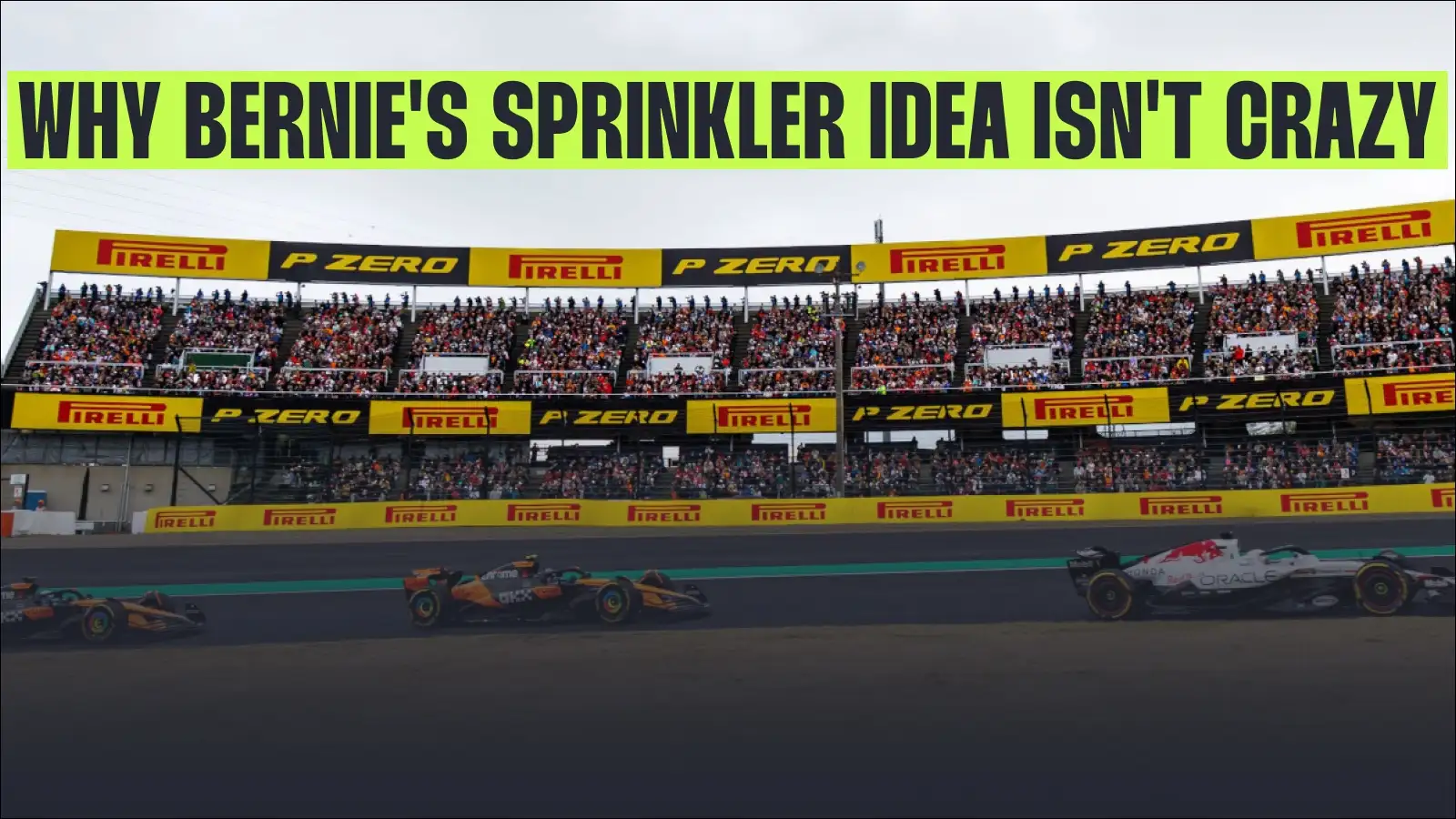“That’s all the highlights?” Oscar Piastri asked incredulously after watching F1’s very brief highlights reel at Suzuka. “That’s all that happened in that race?”
“Nothing happened,” replied Lando Norris (and the 115,000-strong sellout crowd). “I don’t think there was one overtake.”
Bring on the sprinklers!
To be fair to the 2025 Japanese Grand Prix, there were 15 in total – that’s one every three-and-a-half laps.
But of those 15, only one – Lewis Hamilton on Isack Hadjar – was amongst the top ten on the starting grid with that order, barring Hamilton on Hadjar, finishing as it started.
So much for DRS, which as of next season will be replaced by a new system that gives the drivers a short burst of additional battery power when they are within one second of the car in front.
Same, same, but different.
More from the 2025 Japanese Grand Prix
👉 Japanese GP conclusions: Verstappen’s Alonso-esque rampage, McLaren tactics, the real Doohan mistake
👉 The updated Drivers’ and Constructors’ Championship standings
But on a Sunday afternoon when even strategy couldn’t spice up the race, eyes kept turning to the sky, hoping that the FIA’s forecast of 40 per cent rain, even as it lessened to 20, would materialise.
Even the message to Norris that there could be one lap of rain, biblical we dreamed as we crossed toes, grabbed that rabbit foot, and danced like no one but the rain gods were watching, proved to be a dry squib.
And so for 53 laps we watched on, the drivers nowhere fast, as pole-sitter Max Verstappen clinched a deserved win as the top ten on the grid all became points-scorers at the Japanese Grand Prix.
Oh, how we wished for rain.
A sudden downpour, torrential or otherwise. Intermittent showers. A handful of laps of the wet stuff. A slippery newly resurfaced Suzuka. Strategy chaos. Split-second decisions on which F1 legends are made or broken. 17th to first.
If only there were a solution. A way to not only give the 115,000 people who paid good money to watch the Japanese GP from the grandstands a show and not a procession. To give those around the world who woke up at stupid o’clock to watch something with a stronger kick than their coffee. Something that keeps the drivers from asking “that’s all?”.
There is, it’s called sprinklers, and it was an idea proposed by former F1 supremo Bernie Ecclestone back in 2011.
“We always had the most exciting races in the wet, so let’s think of making rain,” he said in 2011.
“There are race tracks you can make artificially wet and it would be easy to have such systems at a number of tracks. Why not let it ‘rain’ in the middle of a race for 20 minutes, or the last 10 laps? Maybe with a two-minute warning ahead of it.
“Suspense would be guaranteed.”
He later added: “There’s no reason why sprinklers shouldn’t happen. There’s so much support because wet races are always the best by far,” he said as Sebastian Vettel marched towards the title with 11 wins in 19 races.
“I thought maybe at the beginning it was a little crazy but it’s surprising how much support that idea is getting now. Providing we do it so nobody would know when it was going to happen, like when it rains, I think it would make for a lot of entertainment.
“Would it make F1 more exciting? I don’t know.”
It definitely would’ve made the 2025 Japanese Grand Prix more exciting, that I can guarantee.
And let’s be honest with ourselves now, if Formula 1 can introduce the fake overtaking of DRS and power boosts, why not go the whole hog by installing sprinklers at some of the tracks?
The drivers love racing at Suzuka, but they all admit that it is a track where you cannot overtake, it doesn’t have a long enough straight to power through even with DRS, or a sharp enough braking zone to divebomb the car ahead.
Only three times in the last decade has the driver who started on pole not won the Grand Prix, and twice it was Mercedes overhauling the other Mercedes.
The puritans will scream, but they will always find something to rail against anyway (wait until next year’s 50/50 engine/electricity split!), but any argument that it is ‘too artificial’ was undone the day Formula 1 introduced DRS.
So Formula 1 has tried one artificial method to spice up the racing and, while it has succeeded at times, it has failed at others such as Sunday’s Monaco-esque Japanese Grand Prix. Even Monaco is trying something new this year with two mandatory pit stops instead of just one.
If Monaco, the crown jewel, can acknowledge that it needs to do something different, something to entertain, something to warrant its place on the Formula 1 calendar, than surely the sport’s other venues can also try harder.
May I, and Bernie, suggest a sprinkler or three?
Read next: Explained: Why Piastri didn’t attack Norris at the Japanese GP
